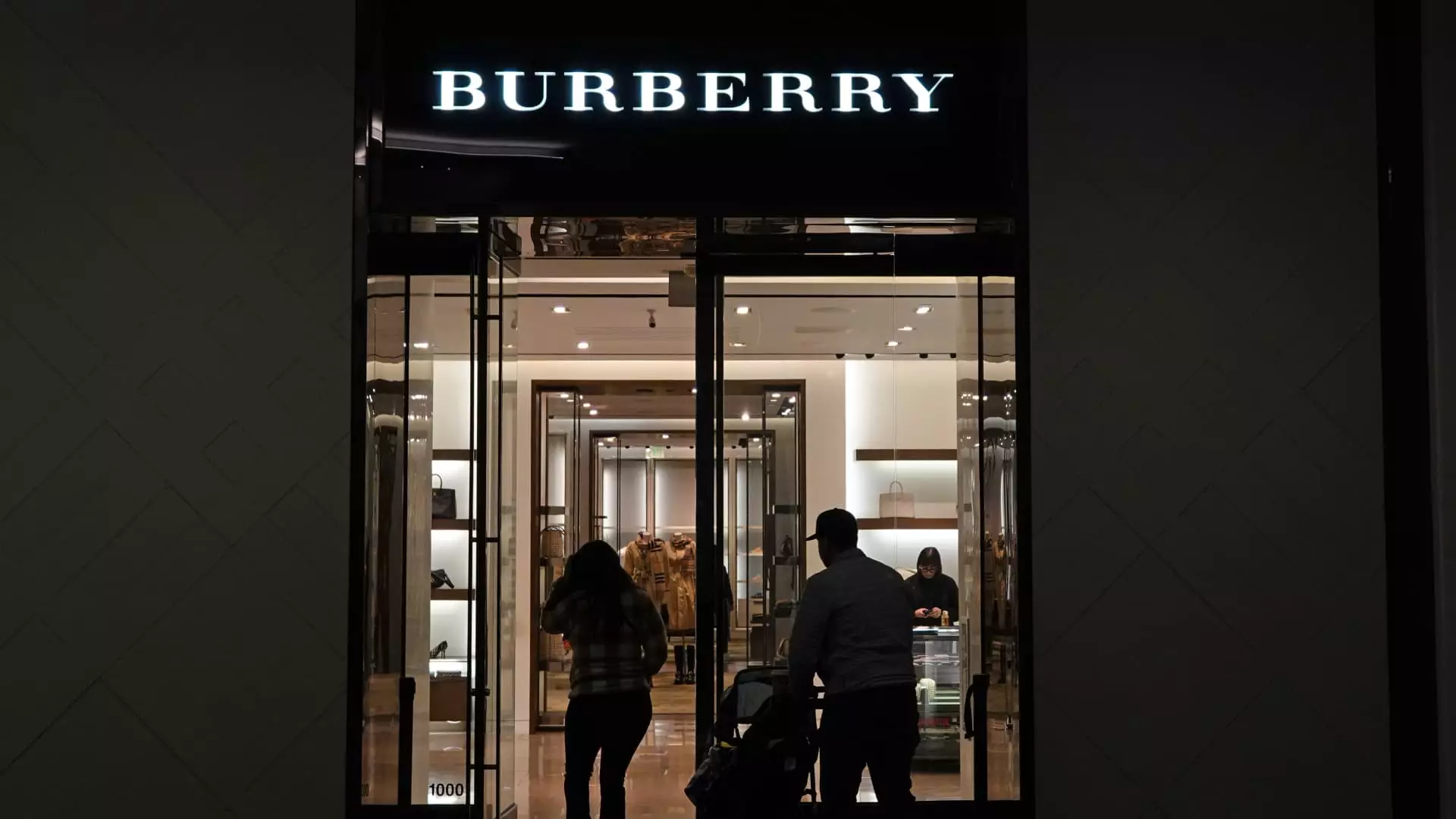Burberry, the prestigious British luxury fashion label, has recently garnered significant attention on the stock market as its shares surged by 16% following the release of its fiscal third-quarter earnings. This spike can be attributed to a lesser-than-expected decline in sales, signaling the early fruits of CEO Joshua Schulman’s transformative strategies aimed at revitalizing the brand. Though still operating amidst challenging market conditions, Burberry’s results offer a glimpse of optimism in an industry known for its volatility.
Burberry reported comparable sales dropping 4% for the three months leading up to December, contrasting analysts’ bleak predictions of a 12% decrease. This unexpected resilience is reflected in the total revenue for the holiday period, which reached £659 million ($816 million), albeit down 7% year-on-year when measured at reported exchange rates. While the brand’s performance was lackluster in key regions like Asia Pacific and Europe, where sales fell by 9% and 2% respectively, it did experience a 4% increase in the Americas. This regional insight highlights a broader trend: U.S. consumer spending in the luxury sector appears to be rebounding, a sign that Burberry might be positioned to leverage this market recovery effectively.
Leadership and Strategic Shifts
CEO Joshua Schulman, who joined Burberry in July from Michael Kors, has been pivotal in initiating a cultural and strategic overhaul within the company. Recognizing the brand’s past struggles, Schulman launched “Burberry Forward” in November, a campaign aimed at reigniting consumer interest and enhancing brand desirability. While Schulman remains clear-eyed about the long road ahead, he expressed optimism regarding the positive response to recent campaigns. His remarks underscore a commitment to reshaping Burberry’s narrative while focusing on sustainable, long-term growth.
CFO Kate Ferry noted that Burberry has not yet established a specific timeline for its revitalization efforts but remains hopeful about recapturing past successes. She acknowledged encouraging macroeconomic trends in the U.S. that could enhance consumer behavior without directly incorporating those expectations into the company’s forecasts yet. This cautious optimism echoes analysts’ sentiment regarding a promising future, fueled by a strong dollar and the potential stability from macroeconomic factors.
Financial experts are viewing Burberry’s performance with renewed interest. RBC analysts, for instance, identified this earnings report as a potentially transformative turning point for the brand. Their analysis emphasized positive early-stage adjustments, including improved store layouts and a sharper focus on core product offerings. These operational enhancements are critical as Burberry seeks to differentiate itself in a crowded luxury market.
Mamta Valechha, a consumer discretionary analyst at Quilter Cheviot, pointed out several variables contributing to Burberry’s outlook. The observed uptick in demand aligns with luxury market trends, as witnessed by the impressive quarter reported by Richemont, the owner of Cartier. This comparison suggests that a larger renaissance within the luxury sector could work to Burberry’s advantage, solidifying the likelihood of a sustained recovery.
Challenges and Strategic Focus
Despite the positive indicators, Schulman cautions that Burberry is still in the initial stages of its transformation. The brand faces the ongoing challenge of overcoming a history of management turnover and operational inconsistency. Nonetheless, the focus on “back-to-basics” strategies appears to resonate with consumers and streamline their offerings effectively. The positive sales momentum may serve as a robust foundation on which to build broader strategic initiatives moving forward.
Burberry’s recent earnings report yields a cautiously optimistic narrative for the brand that has struggled to maintain its glamorous image amidst fierce competition. While sales still show signs of distress, the market’s response to Schulman’s initial strategies hints at a potential turnaround. As the luxury sector begins to recover, Burberry’s revitalization efforts, informed by market insights and consumer trends, could pave the way for a promising future. Investors and consumers alike will be watching closely to see if the brand can solidify its resurgence while navigating the ever-evolving landscape of high fashion.


Leave a Reply